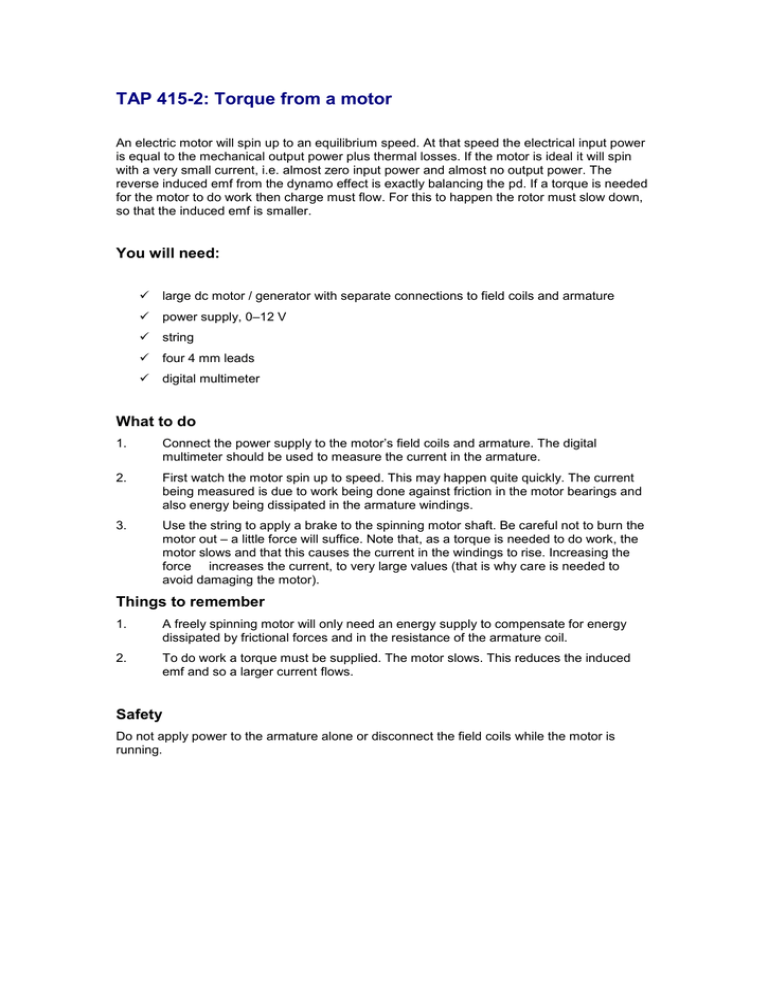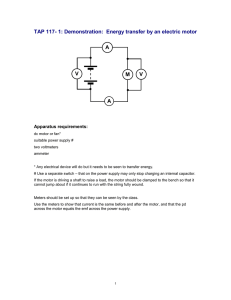Episode 415-2: Torque from a motor (Word, 27 KB)
advertisement

TAP 415-2: Torque from a motor An electric motor will spin up to an equilibrium speed. At that speed the electrical input power is equal to the mechanical output power plus thermal losses. If the motor is ideal it will spin with a very small current, i.e. almost zero input power and almost no output power. The reverse induced emf from the dynamo effect is exactly balancing the pd. If a torque is needed for the motor to do work then charge must flow. For this to happen the rotor must slow down, so that the induced emf is smaller. You will need: large dc motor / generator with separate connections to field coils and armature power supply, 0–12 V string four 4 mm leads digital multimeter What to do 1. Connect the power supply to the motor’s field coils and armature. The digital multimeter should be used to measure the current in the armature. 2. First watch the motor spin up to speed. This may happen quite quickly. The current being measured is due to work being done against friction in the motor bearings and also energy being dissipated in the armature windings. 3. Use the string to apply a brake to the spinning motor shaft. Be careful not to burn the motor out – a little force will suffice. Note that, as a torque is needed to do work, the motor slows and that this causes the current in the windings to rise. Increasing the force increases the current, to very large values (that is why care is needed to avoid damaging the motor). Things to remember 1. A freely spinning motor will only need an energy supply to compensate for energy dissipated by frictional forces and in the resistance of the armature coil. 2. To do work a torque must be supplied. The motor slows. This reduces the induced emf and so a larger current flows. Safety Do not apply power to the armature alone or disconnect the field coils while the motor is running. Practical advice This is a quick demonstration to illustrate the operation of an electric motor, drawing attention to energy in the system. Electrical energy is being transferred to mechanical and thermal energy. The motor spins up to a speed where the back emf balances the applied pd. if the motor is ideal, without armature coil resistance or friction. If a torque is required, the motor must slow, reducing the back emf causing a larger current to flow. If your school does not already own one of these motor/generators, they can be difficult to obtain. Alternative approaches It is possible to try to get some quantitative results with this experiment. The band brake would need to be applied with newton meters, to allow calculations of the efficiency of the motor from electrical energy supplied and mechanical work done. This can then be related to a measurement of the resistance of the armature. External reference This activity is taken from Advancing Physics chapter 15, 320P




